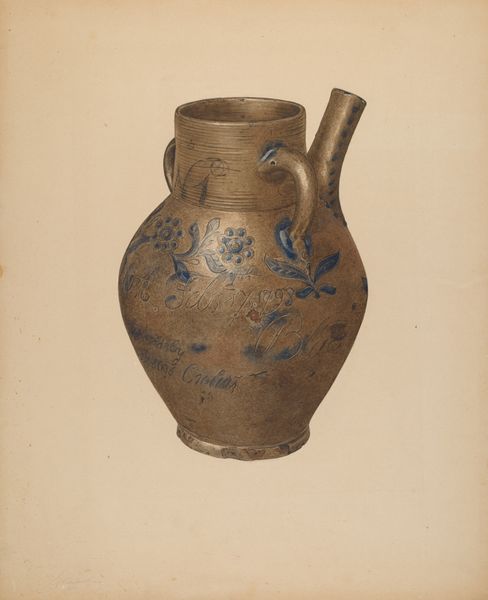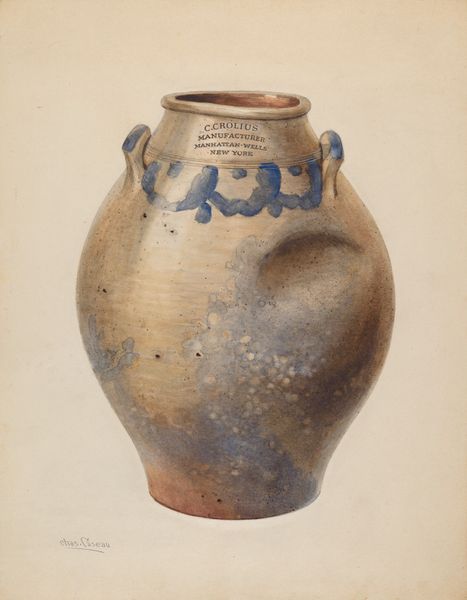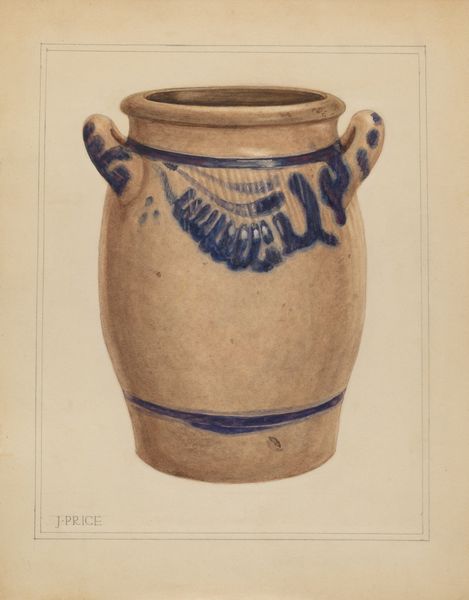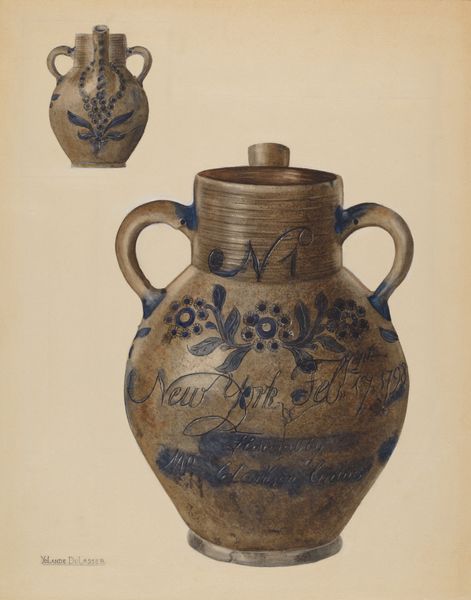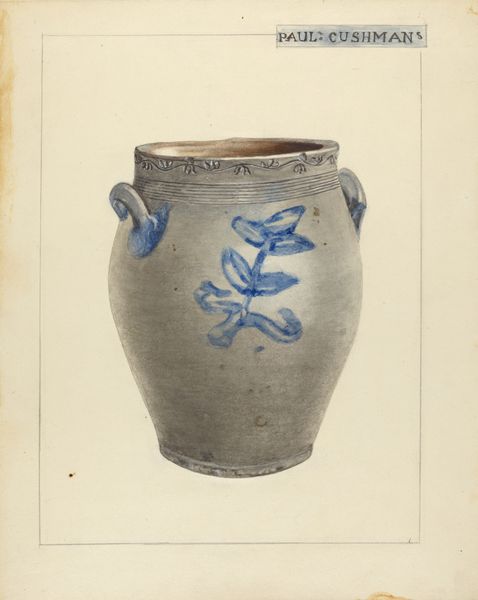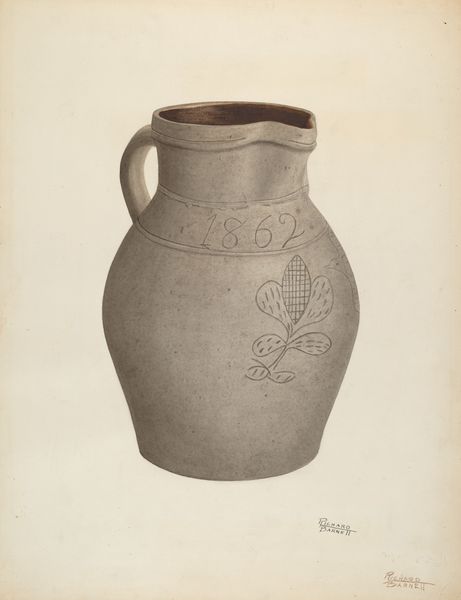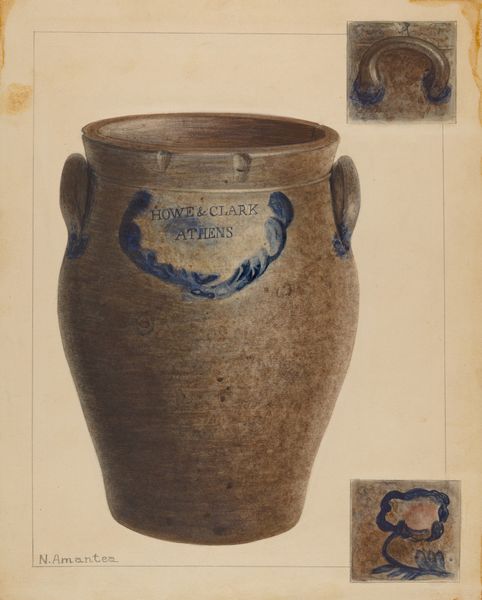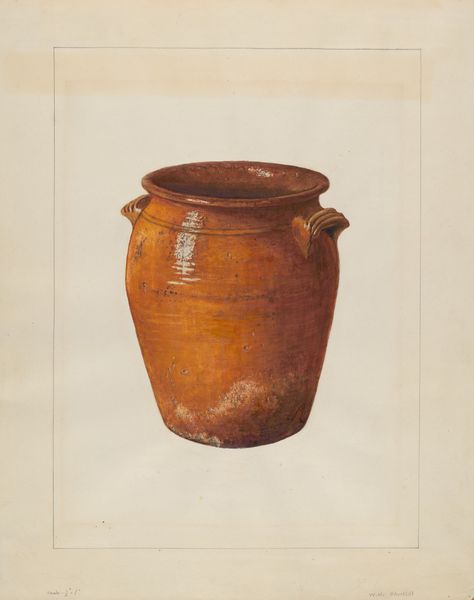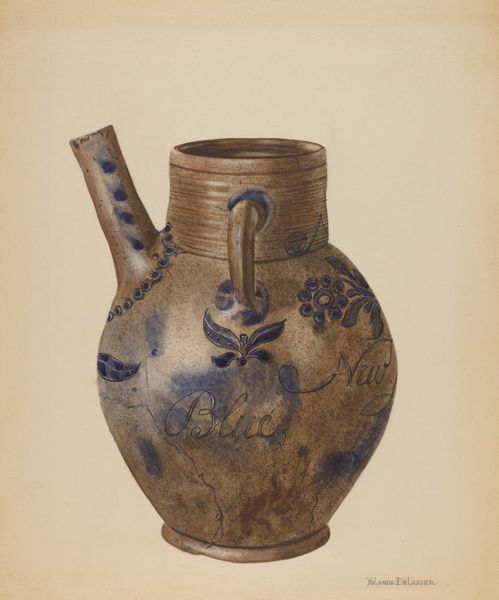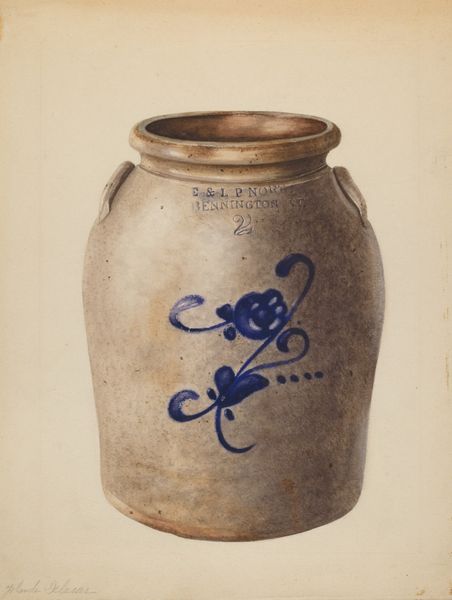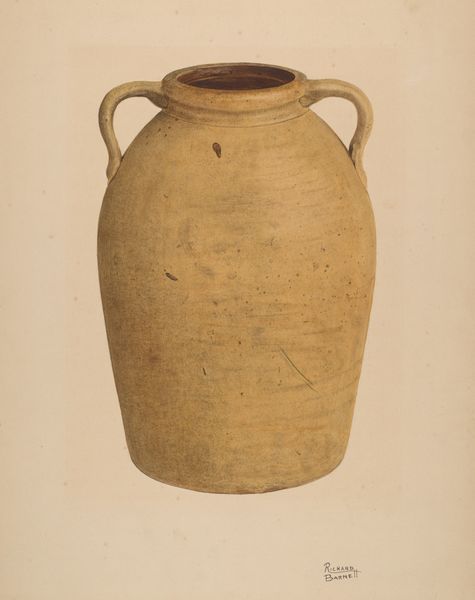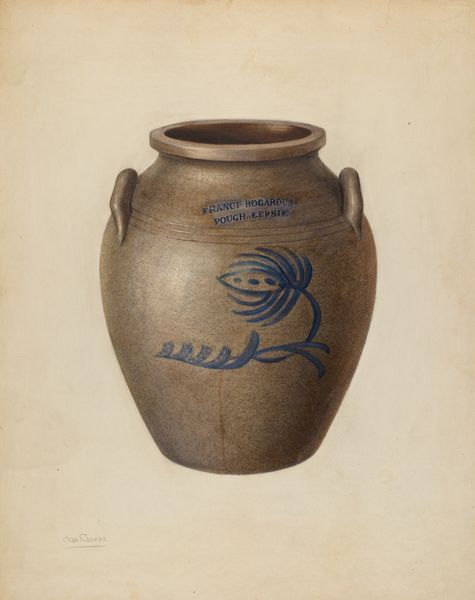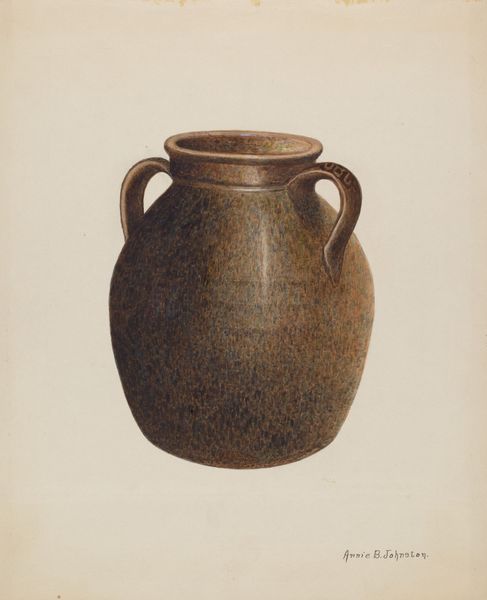
drawing, ceramic, watercolor
#
drawing
#
ceramic
#
charcoal drawing
#
watercolor
#
stoneware
#
ceramic
#
watercolour illustration
#
watercolor
Dimensions: overall: 28.8 x 22.4 cm (11 5/16 x 8 13/16 in.) Original IAD Object: 12 1/2" High 5 1/2" Dia(top) 5 1/2" Dia(base)
Copyright: National Gallery of Art: CC0 1.0
Curator: Looking at Yolande Delasser’s drawing titled "Crock," created around 1937 using watercolor and charcoal, I’m immediately struck by its humble presence. It’s a simple earthenware vessel, rendered with considerable care. Editor: Yes, a certain somber quality permeates this work. The muted palette, primarily browns and blues, combined with the straightforward composition evokes a feeling of utilitarian simplicity. There is something intrinsically compelling about this rendering of this humble object, though I would love to explore why. Curator: Thinking about the historical moment, the late 1930s were marked by economic hardship and social upheaval. Perhaps Delasser was drawn to the beauty and functionality inherent in everyday objects, a theme common in the art responding to the Depression era. Editor: Delasser lived a long life and produced works during periods of dramatic change. The political implications here reside in the artistic interpretation of labour in art, a frequent visual shorthand in that era. Curator: Absolutely. There's also a question about access to art. This vessel isn’t ornate or precious; it's a working-class object. Editor: So how would we interpret this depiction in the wider social commentary that was brewing with respect to the societal obsession with labour? Curator: Perhaps Delasser saw something essential in these unpretentious forms, a testament to enduring practicality in an era defined by crisis, celebrating utility over luxury. I can't help but to interpret this artwork from a positionality of resisting commodification. Editor: You make an insightful point! Viewing this artwork, now I appreciate more than ever how we assign artistic value based on socio-political cues. Curator: Understanding artworks within the fabric of lived experiences provides such rich perspective, doesn’t it? Editor: It does, and reminds us about the importance of remembering art's inherent social dialogues through all our shared intersectional struggles.
Comments
No comments
Be the first to comment and join the conversation on the ultimate creative platform.
